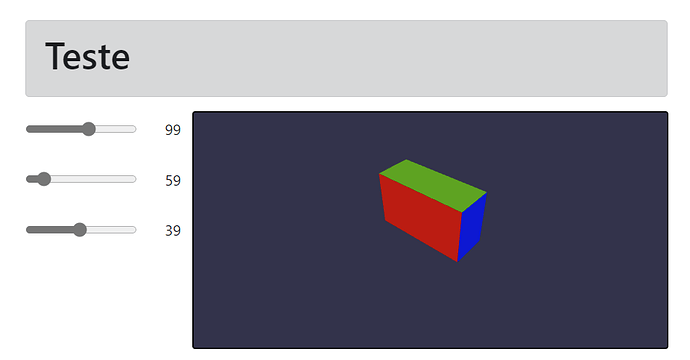I adapted what I had sent you before with the playground from your original question;
import {
Mesh,
MultiMaterial,
StandardMaterial,
SubMesh,
Color3,
Vector3
} from "@babylonjs/core";
import { useRef, useEffect } from "react";
//import imagem from "./core/assets/images/Toronto_490x360.jpg";
type Props = {
largura: number;
altura: number;
profundidade: number;
};
// adapted from https://playground.babylonjs.com/#T40FK
const MyMesh = ({ largura, altura, profundidade }: Props) => {
const material0 = useRef<StandardMaterial | null>(null);
const material1 = useRef<StandardMaterial | null>(null);
const material2 = useRef<StandardMaterial | null>(null);
const material3 = useRef<StandardMaterial | null>(null);
const material4 = useRef<StandardMaterial | null>(null);
const material5 = useRef<StandardMaterial | null>(null);
const box = useRef<Mesh | null>(null);
const multi = useRef<MultiMaterial | null>(null);
useEffect(() => {
if (multi.current === null || box.current === null) {
return;
}
multi.current!.subMaterials.push(material0.current);
multi.current!.subMaterials.push(material1.current);
multi.current!.subMaterials.push(material2.current);
multi.current!.subMaterials.push(material3.current);
multi.current!.subMaterials.push(material4.current);
multi.current!.subMaterials.push(material5.current);
//apply material
box.current!.subMeshes = [];
var verticesCount = box.current!.getTotalVertices();
box.current!.subMeshes.push(
new SubMesh(0, 0, verticesCount, 0, 6, box.current!)
);
box.current!.subMeshes.push(
new SubMesh(1, 1, verticesCount, 6, 6, box.current!)
);
box.current!.subMeshes.push(
new SubMesh(2, 2, verticesCount, 12, 6, box.current!)
);
box.current!.subMeshes.push(
new SubMesh(3, 3, verticesCount, 18, 6, box.current!)
);
box.current!.subMeshes.push(
new SubMesh(4, 4, verticesCount, 24, 6, box.current!)
);
box.current!.subMeshes.push(
new SubMesh(5, 5, verticesCount, 30, 6, box.current!)
);
// already one box.material=multi;
}, [box, multi]);
return (
<>
<standardMaterial
name="material0"
ref={material0}
diffuseColor={new Color3(0.75, 0, 0)}
/>
<standardMaterial
name="material1"
ref={material1}
diffuseColor={new Color3(0, 0, 0.75)}
/>
<standardMaterial
name="material2"
ref={material2}
diffuseColor={new Color3(0, 0.75, 0.75)}
/>
<standardMaterial
name="material3"
ref={material3}
diffuseColor={new Color3(0, 0, 0.75)}
/>
<standardMaterial
name="material4"
ref={material4}
diffuseColor={new Color3(0, 0.75, 0)}
/>
<standardMaterial
name="material5"
ref={material5}
diffuseColor={new Color3(1, 1, 0)}
/>
<box
name="boxMulti"
ref={box}
width={80}
height={100}
depth={30}
scaling={new Vector3(largura / 80, altura / 100, profundidade / 30)}
position={new Vector3(0, altura / 2, 0)}
>
<multiMaterial name="nuggetman" ref={multi} />
</box>
</>
);
};
export default MyMesh;
It’s a bit tedious declarative like that, but it is a re-usable component. You can assign textures to those standard materials declaratively. I did quite a bit of box textures per side that for a game I made - I had adapted code from another project ( SvenFrankson/planet-builder-web: BabylonJS version of PlanetBuilder algorithms (github.com) using UV mapping of textures. I ended up using different boxes than the MeshBuilder, but I suspect you are doing something more involved and that is just a sample. Cheers.

